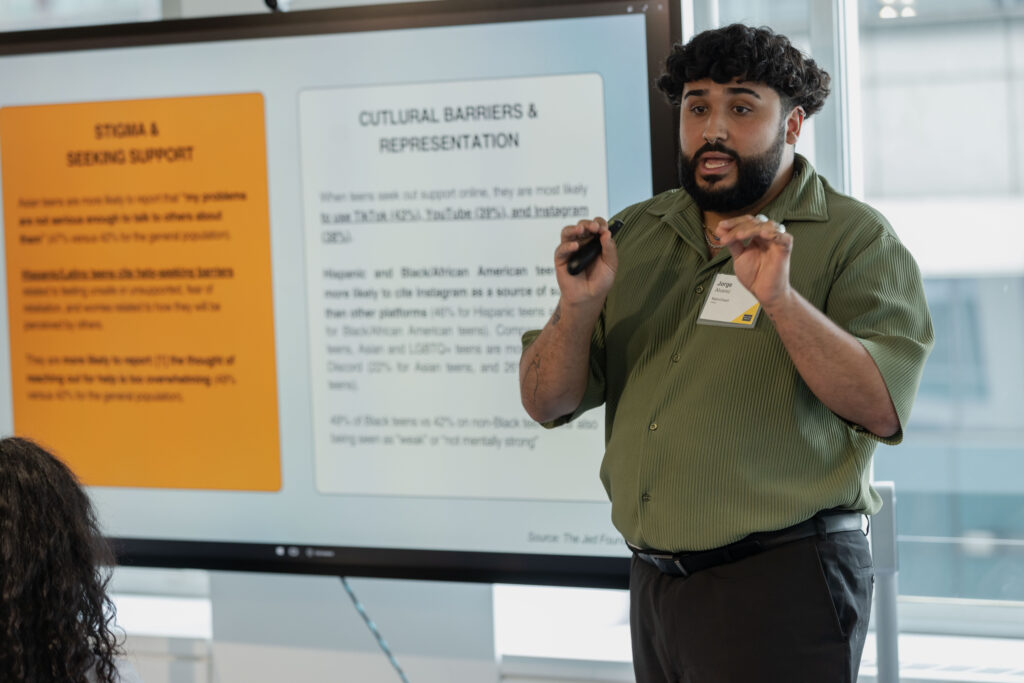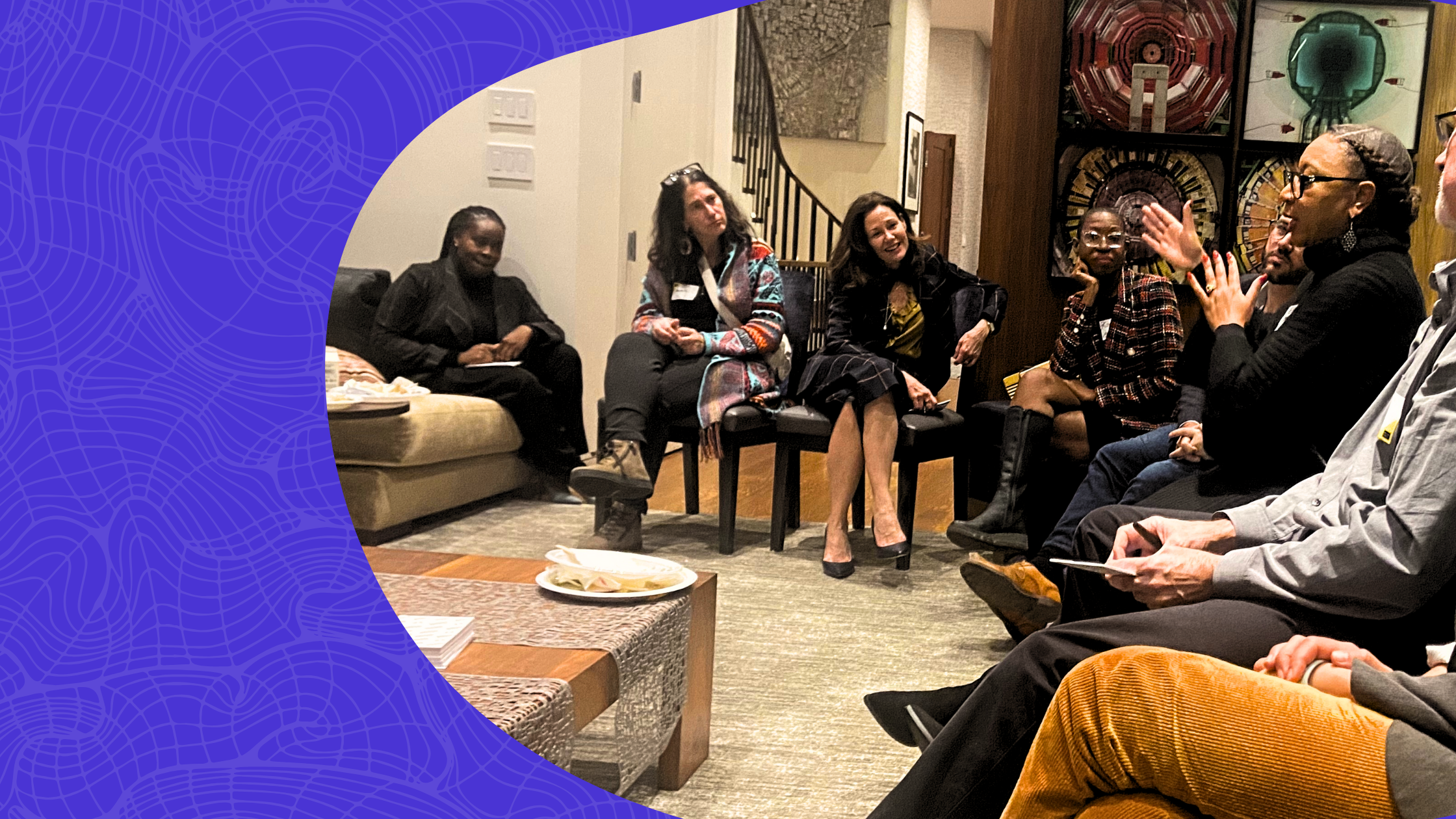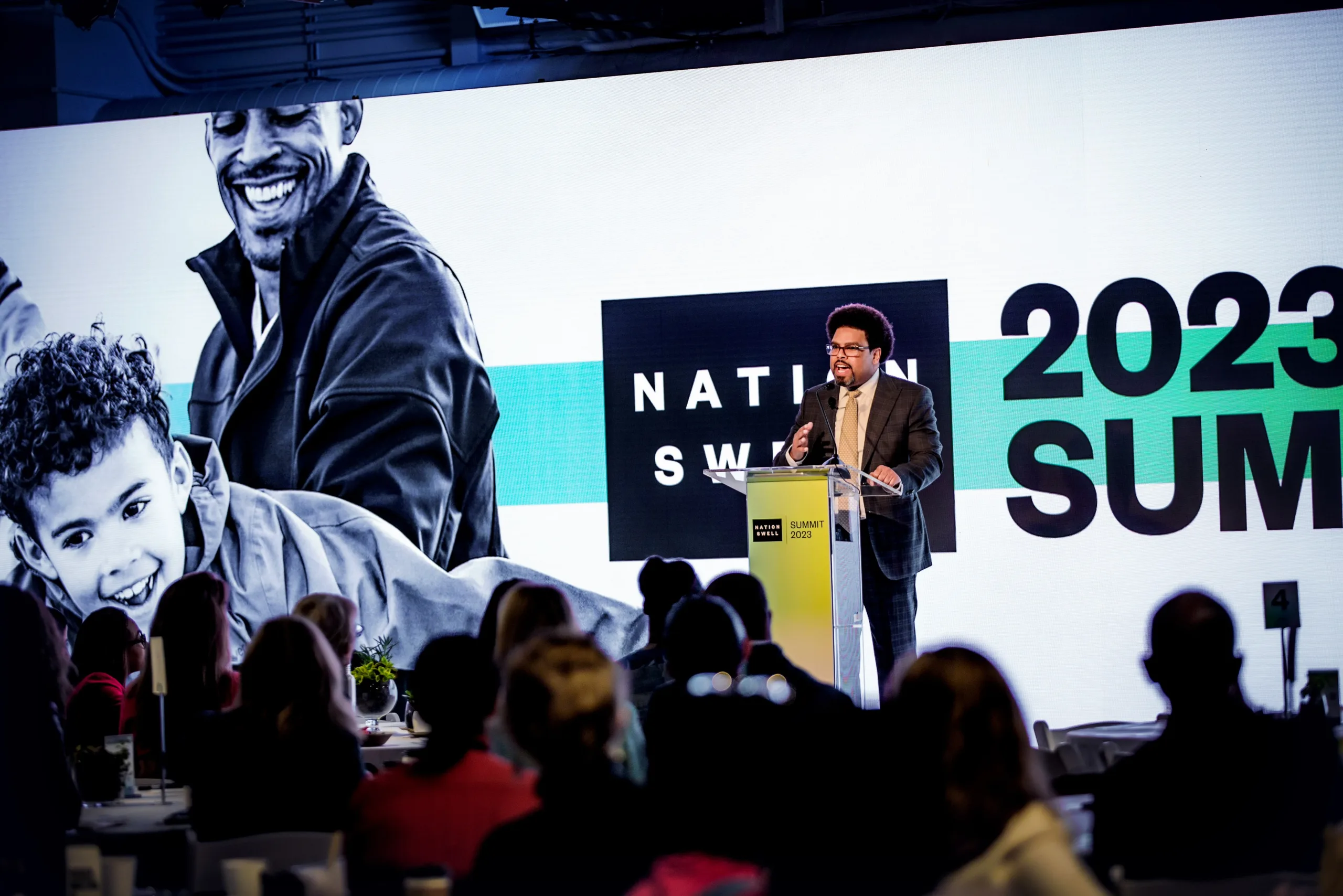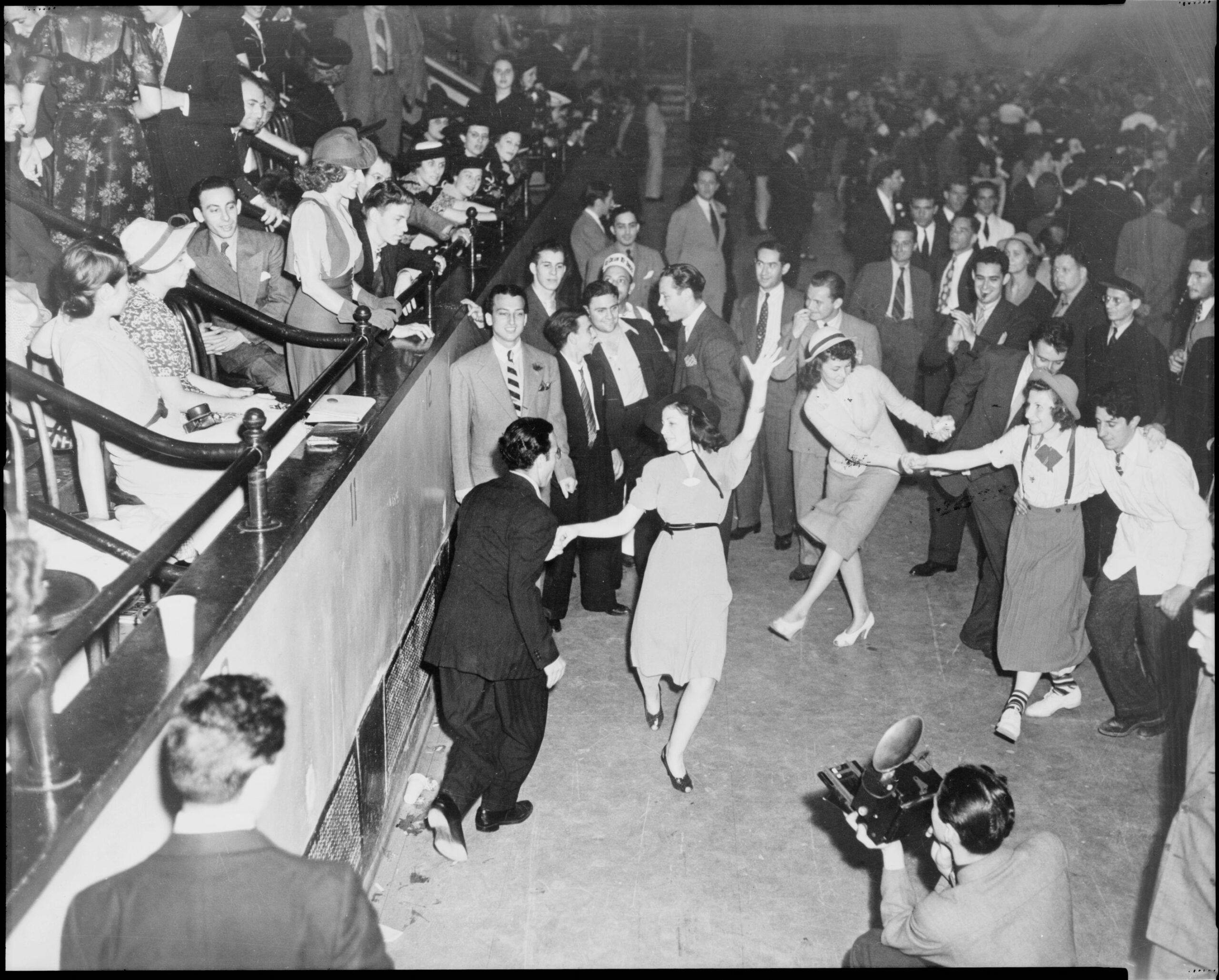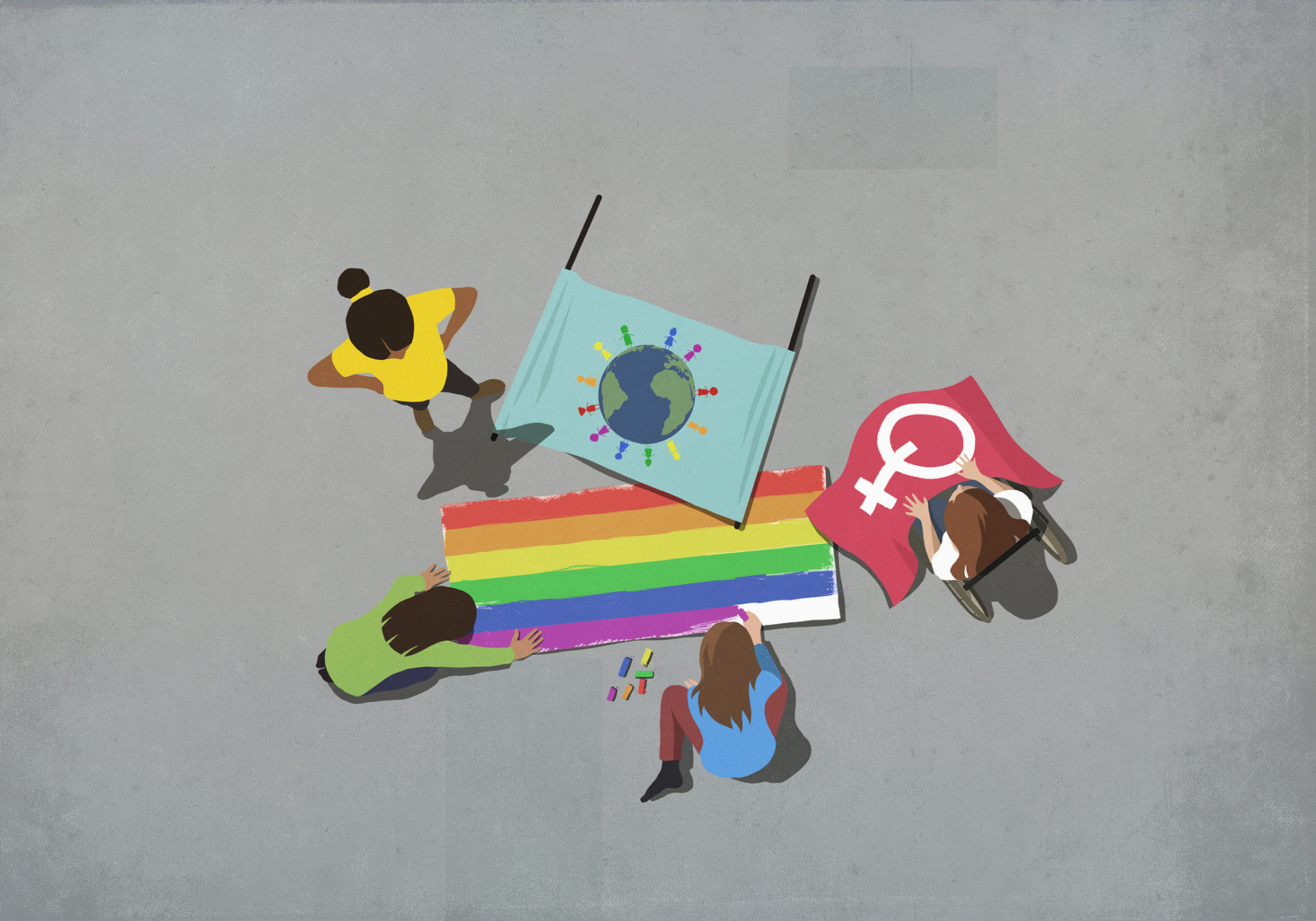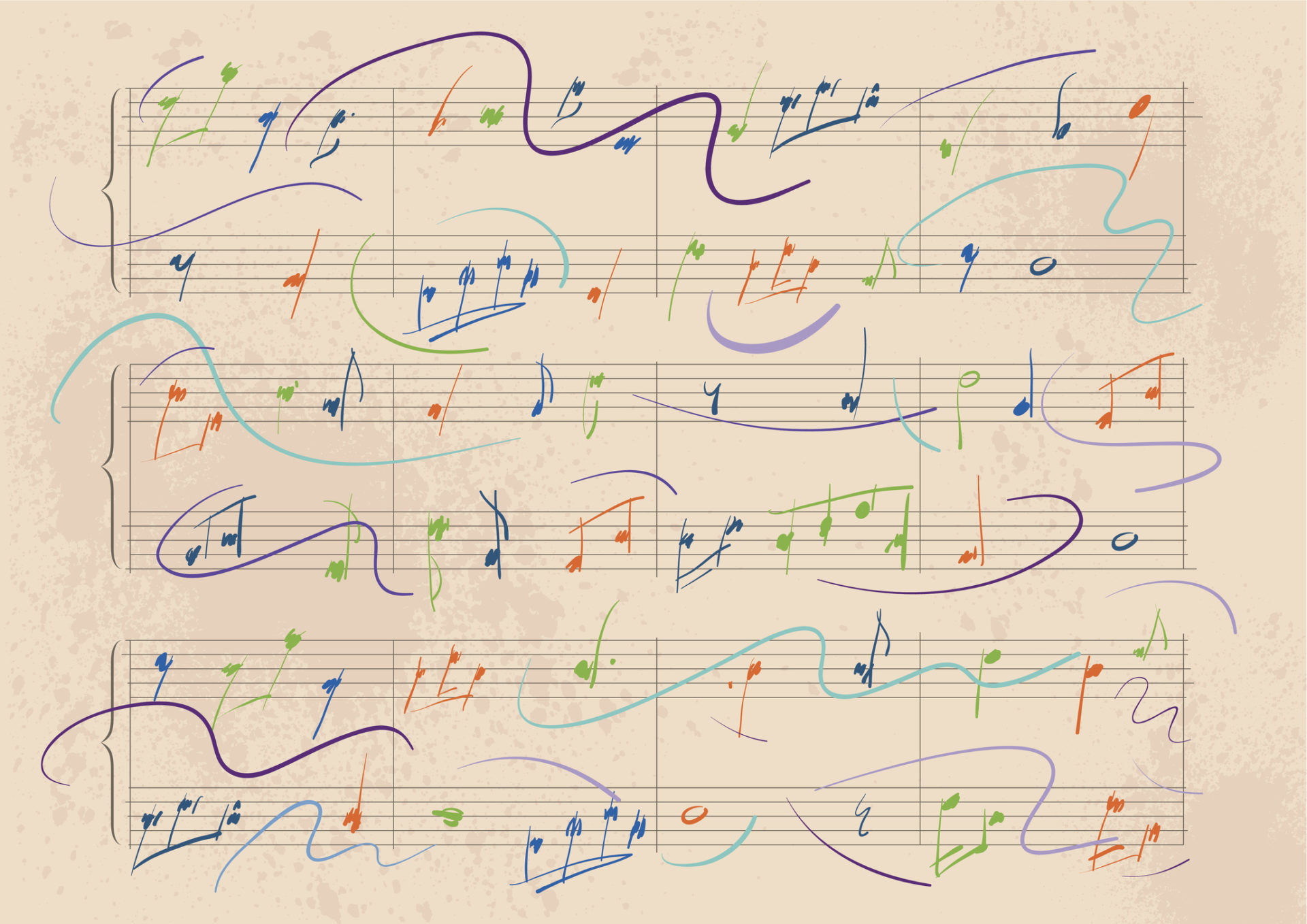The makings of a great leader can be found in unexpected places and situations, often well outside the executive suite. To illustrate this point, NationSwell sat in on a conversation between Council members Roselinde Torres and Danny Richter to talk about the surprising ways that dance — Lindy Hop, to be specific — can sometimes be illustrative of an elegant and adept management style.
Here are the top three takeaways from the conversation:
- Leadership, like dance, is more effective when you take time to learn the fundamentals — specifically, figuring out how to weave together expertise and connection.
- Stringing together six and eight-count dances is a bit like speaking a language that your partner intuitively understands — it won’t work unless you’re on the same page. Communication in a business setting functions in a similar way: Finding common ground and speaking the same “language” is integral to any fluid, successful work relationship.
- Just as every dancer has a distinctive style, every leader will leave a unique imprint on their teams, and understanding yours is crucial to your presentation. Having an intuitive spatial awareness helps you to move gracefully around the dance floor, and having an intimate self-awareness can help you carry that same grace forward in a leadership role.
Keep reading for the full interview.
Danny: I’m so excited to be having this conversation, and to be having it with Roselinde, because she has a lot more experience than I do in terms of leadership.
Roselinde: I’ve been very interested over the past three years in finding non-traditional metaphors and analogies for leadership. Oftentimes when I work with leaders, it seems for some of them that great leadership is out of their reach — like it’s not something they have within themselves. What appealed to me about Danny’s instruction with the Lindy dance is that he’s coming from a place of demonstrating leadership in an everyday activity, to some extent. It’s a reinforcement that leadership is within all of us, within everyday people, we just have to see these examples. I hope people might use the Lindy hop analogy to look at their own leadership expression, to recognize that leadership is all around us.
Danny: I began swing dancing because it was fun, because I enjoyed it, so that was my entre into dance. As my career was progressing, I had more leadership expectations and started having reports — people who were reporting to me. As I was continuing to dance, it was almost by accident that I started to notice some of the parallels I’d observed since having learned how to swing that I could use in my evolving role as a leader. And the biggest thing that struck me was that Lindy Hop, and social dancing in general, was a good way to practice leadership that a lot of people think you can’t practice. I came to realize that it’s a real and fun way to practice, and I started being intentional about weaving in elements that expose me to different people and different styles.
As you said, Roselinde, in my work I do talk with a lot of regular people — we have 200,000 people in our organization in every U.S. state, and I get up in front of them for long periods of time, 30 minutes at a time, and the spotlight is on me and I need to improvise answers to questions. That’s actually one parallel, is that mastery of fundamentals. The fundamentals of those dances — those six count, or those eight count steps — and then combining them in new and interesting ways that match with the person I’m dancing with. In my real job it comes from mastering the fundamentals of science, policy, and economics, and then really bringing them together to weave and connect to the person who’s asking the question and address what they’re asking.
The more people I talk with, the more people I dance with, the better I get at listening and figuring out more quickly where they’re coming from and what it is they’re looking for from me. So that’s where I start to see parallels between this really practical way of becoming better, not just as a Lindy Hop swing dancer, but also as a leader, as someone who’s expected to connect with people.
Roselinde: Right off, the thing that I hear you describing is this notion of partnership — that you have a partner that you’re working with. Most leaders now have to build relationships with many different types of partners within the organization, and outside of the organization. And the question is, do you really have a sensibility for that partner? And also, how do you interact in a way that makes them want to keep dancing with you?
Danny: I think one thing I come back to is that I think dance is a kind of language. I generally like and appreciate language, and the different perspective that the grammar of language forces upon you when you work in the way it enables me to get an insider’s perspective, I just find it fascinating. And it’s the same thing with Lindy Hop. When you think about it, those six and eight-count dances I mentioned earlier are like words or phrases that everybody knows, almost like a cliche. When you’re stringing those together, you’re talking, you’re creating sentences, and there’s the opportunity to tell jokes purely through dance. If they expect something and then you break with that expectation, there’s a surprise — I’ve had a silent dance, and then the follow I’m dancing with just breaks out in laughter because I told a “dance joke.” And I find that absolutely fascinating, that there’s this conversation, because there’s so much nuance about how people talk to each other. There are shades of meaning for different words, and there are shades of meaning for different dances, and for different moves. That will change depending on what song you’re dancing to, and there are certain songs that have different contexts because of the words. So if you break with what is expected in the context of that actual song, that can mean something different.
There’s also this concept of musicality — that’s how well you’re listening to the song that you’re hearing, and how you respond. So if there’s a break in the song and you know that it’s coming and you actually break, it’s a lot more enjoyable. Not only are you two dancing together, you’re working well within the context in which you’re both operating.
What I’ve come to learn is that it’s actually pretty rare to dance with a leader who can speak verbally while you’re having this dance dialogue. But that’s something I love to do, I love to be dancing and holding a conversation. And so that’s another way that I try to connect, really — how can I have fun while dancing with this person, and also get to know them? What are the topics I can cover, and can I get them to laugh, not just because of the fun of the dance, but also because of the conversation we’re having in 3-5 minutes. It really enables me to drill down into that emotion, and to connect quickly with people. In my line of work, people are so passionate about climate — how do I figure out what they care about so that I can make them feel heard?
Roselinde: I was thinking about the use of language in dance and how you convey that, and it reminded me of a time when I did a public domain leadership event where we had people come in from different functional disciplines, and I remember a conversation between a manufacturing engineer and a creative marketer who worked for a very edgy retailer. The two of them were talking about the notion of “process discipline”. And what was interesting was that even though it was the same phrase, it meant something completely different for each of them. And when they started describing what it meant for each of them, I still remember the face of the creative marketer who was horrified at these very precise steps and seemingly conforming structures being described by the manufacturing engineer as best practice.
So I think what that brings up, Danny, to reinforce what you’re saying, is that it really is important to think about the language, the meaning of the words, for that individual, or that team that you’re trying to connect with as a leader. You can’t presume that your language is their language. You can get it from listening, you can watch feedback to see what’s resonating or what isn’t, but I also think it’s about what you said about how sometimes it’s just a matter of asking — asking questions, asking if we’re on the same page with what we’re describing. I always suggest that if people are going to do homework, to include some homework when they’re going to interact with a constituency that they may not know. A lot of times, having worked across the corporate sector, nonprofit groups and government institutions, I’d see these groups interacting with each other for various purposes, and I would always say, you really want to do your homework to see, what is that language, what is that paradigm or mental model for the way they think about time and decision-making and what matters and their values? Doing that up front, rather than just winging it and then “stepping in it” upon your first interaction and making a negative first impression which is very hard to undo.
The other thing you made me think about was the notion of leadership energy. What is the energy exchange that you get? I think energy is more aura than it is charisma, or I think it’s more resonant than it is a rational thing to describe. I imagine when you’re dancing, you’re putting yourself out there for people who want to have an experience, but then they give you something back, and that’s what informs what you choose to do.
Danny: I think that’s where the accents come in. For example, in Washington, D.C., one of the most fundamental forms of Lindy Hop is the swing out, and people in DC dance a very round swing out. But I learned in San Diego, and I learned a very linear swing out, and honestly sometimes that accent is still something I struggle with. If you go up into Baltimore, a 45-minute drive away, it’s more linear, and so there can really be these interesting accents. What you were just saying about the aura, what you leave behind, that takes us back to our original conversation of challenging you to think about what your leadership imprint is. I know what my swing dancing imprint is: I’m an energetic dancer, I’m a very stomp-y dancer. But I think that’s also a great invitation to think about what you want people to come away with as a leader in a professional context. You can think about this with music in general: We listen to music because of the way it makes us feel. I’d be interested in hearing more about what other advice you give to people on what their leadership imprint, their stamp is?
Roselinde: The notion of the imprint came up for me because I would see a dissonance where I would have a conversation with a leader in their office and then we’d go out and interact with their team or the public or whomever and for some people there was a dissonance between who they were privately and who they were publicly. And sometimes I would ask them, what do you think their experience of you was there? And most of them were unaware, either because they were more focused on themselves or nervous or focused on getting to the content of what they were delivering. And then the other place we really spent a lot of time was on new leaders. I worked with a lot of new CEOs and Presidents of organizations, people who were going to take on a new role, and I would say, you can either just let it happen — just spontaneously, whatever comes out — or you can be more intentional. If you have certain things about yourself that you want other people to experience so you know that when they have a conversation with you, it’s not only what you lead them with, it’s also what they experience in the moment.
So people would say, well I want them to feel me as being very collaborative and open-minded, and then you’d observe their conversation and it would be dissonant because they were doing all the talking. So I think the imprint idea is, what is the experience that you deliberately create, and can you actually have elements of your imprint reinforce that.
I’ve had the benefit of watching multiple generations of leaders, and those imprints actually stay with people. You can trace it all the way through different leaders and different configurations. Coming back to the dance analogy, I’m going to bet that if you’re dancing with someone and they experience something while dancing with you that delights them or awes them or makes them feel like, ‘wow, that’s really a cool move,’ that they’re probably going to share that with other people. They’re probably just going to put that into their repertoire and keep sharing it.
Danny: You were talking about the level of self-awareness you need to have, and there are lots of ways you can practice this. One of the things I do is dance with people who are below my skill level, and I always ask, ‘would it be alright if I try to teach you something?’ Because a lot of times, people don’t want to do that. So that self-awareness that people don’t want to learn, they’re just there to have fun, but also just where your body is. If they’re way more skilled than me, I try to move out of the way and give them breaks so that they can show off and be the star of our partnership. It comes back to this idea of listening being so important, in dancing and in leadership.
And that awareness needs to extend in a physical sense as well. One of the easiest ways to just totally make sure someone has a bad time is to send them into a wall or another person. You need to not just have awareness of where you are and where they are, but also what’s coming at you. You need to just have general awareness of what’s going on.
Roselinde: I think from now on I’m going to quote this notion of “sending somebody into a wall,” because how many leaders have done that unintentionally? I think the other aspect of sending someone into a wall may be emotional sometimes. Maybe not physically pushing, but the same principles apply, right? What is going on around you, and are you paying attention? Sometimes you may have a conception of reality that’s very different from what another person’s is, so you’re going along and you’re doing whatever, but in their reality, they just hit a wall, a psychological wall, an emotional wall, whatever. So it’s obviously unintended, you don’t want to intentionally send someone there.
Danny: I do want to pick up on one thing Roselinde just said, about sending people into an emotional wall. There are some things that I learned very early on in dance, including the fact that there are leads and there are follows. Generally speaking, men are leads, generally speaking, women are follows, but there are many women who have led and many men who have followed. One of the things I check up on is, how do I make sure that women who are choosing to dance as a follower are in power? One of the things that they emphasize is that you can just say no. There’s an important element of power in swing dance that should be really fundamental in any conversation, but in terms of throwing people into a wall, one thing I’ve seen many times is you get people in your class who have just learned the pretzel, or they’ve just learned how to do aerials, and they really want to try them out but they’re kind of dangerous. You almost never see aerials in social dancing, you’ll see them in competitions, but those are the things that you really need to ask for, that you can’t do without permission. So that’s another way you can avoid that emotional wall — if you’re consistently saying, let’s do this thing, let’s do this new thing I learned, I want to try it, but your partner says ‘nope,’ they can end the dance right there and just walk away. So there is this element of power that you can get at with dance as well, and there are parallels — not just for leadership, but also in life.
Roselinde: It’s interesting, I hadn’t even thought about the notion of gender roles in the traditional frame of dancing, but I do like this idea of aerials. Sometimes if you’re going to do something extraordinary that’s never been done before — and after all leadership is about guiding people to a place they probably have not been, or they want to go but don’t quite know how to get there — I do think leaders will be asking permission to do “aerials” from time to time. So I do think allowing teams to say no, they don’t want to do it, is important, and maybe there are other ways to build confidence.
I’ve used this term ‘confidence currency,’ which is the transfer of a currency of belief. That people believe they can do something, when you equip them with the skills, resources, capabilities, backups, constituencies, to do it. I do think aerials are fantastic, and it’s often a task of leadership to do something extraordinary by identifying and supporting those who can do the aerials. If it was easy, or common, everyone would be doing them, right?
NationSwell is an award-winning social impact company that assists changemakers, thought leaders and purpose-driven business executives as they drive social impact at scale. Through a robust membership community and the nation’s leading social impact studio, NationSwell supports these impact leaders on a range of our world’s most pressing issues. Learn more here.






